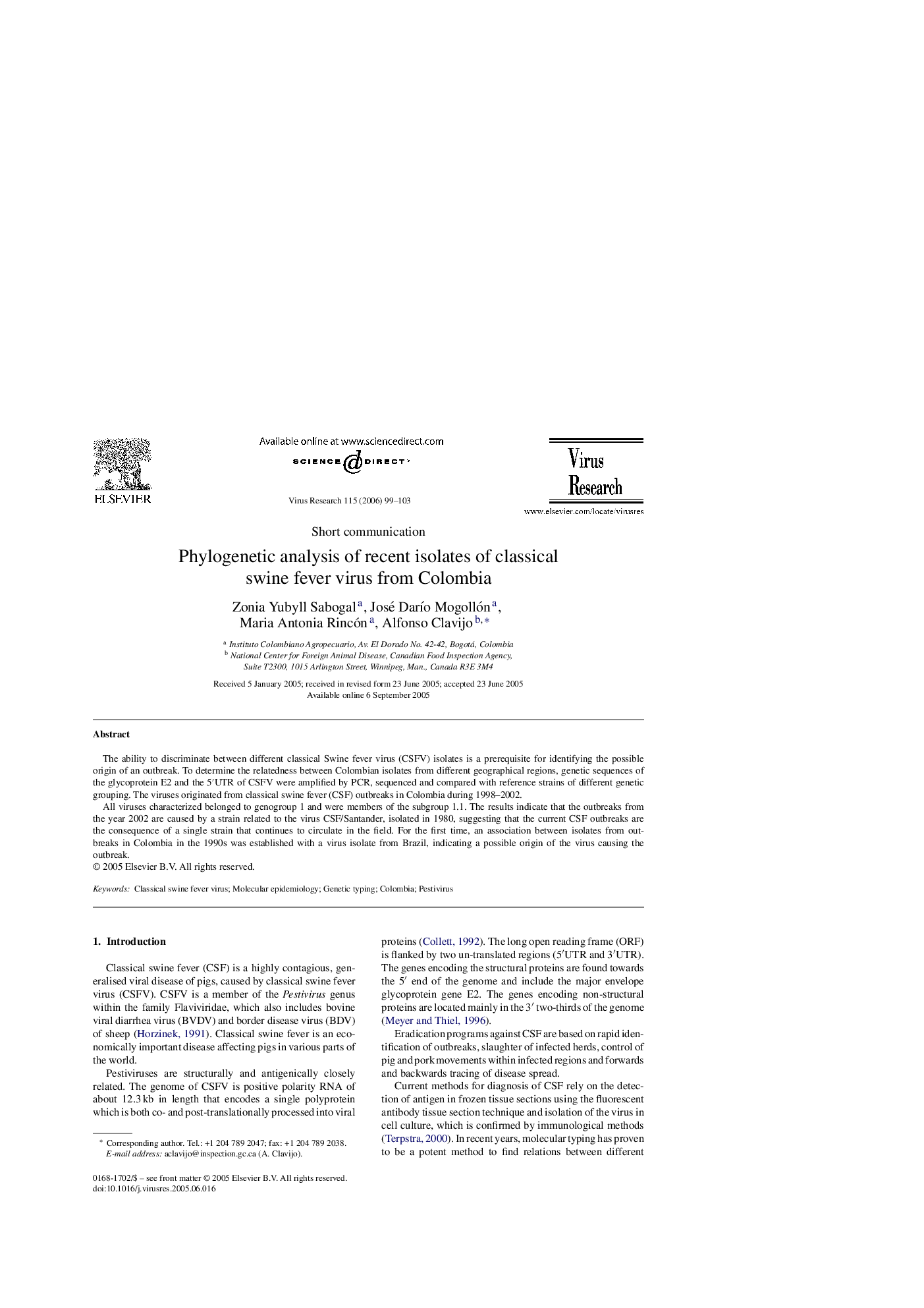| Article ID | Journal | Published Year | Pages | File Type |
|---|---|---|---|---|
| 3431510 | Virus Research | 2006 | 5 Pages |
The ability to discriminate between different classical Swine fever virus (CSFV) isolates is a prerequisite for identifying the possible origin of an outbreak. To determine the relatedness between Colombian isolates from different geographical regions, genetic sequences of the glycoprotein E2 and the 5′UTR of CSFV were amplified by PCR, sequenced and compared with reference strains of different genetic grouping. The viruses originated from classical swine fever (CSF) outbreaks in Colombia during 1998–2002.All viruses characterized belonged to genogroup 1 and were members of the subgroup 1.1. The results indicate that the outbreaks from the year 2002 are caused by a strain related to the virus CSF/Santander, isolated in 1980, suggesting that the current CSF outbreaks are the consequence of a single strain that continues to circulate in the field. For the first time, an association between isolates from outbreaks in Colombia in the 1990s was established with a virus isolate from Brazil, indicating a possible origin of the virus causing the outbreak.
